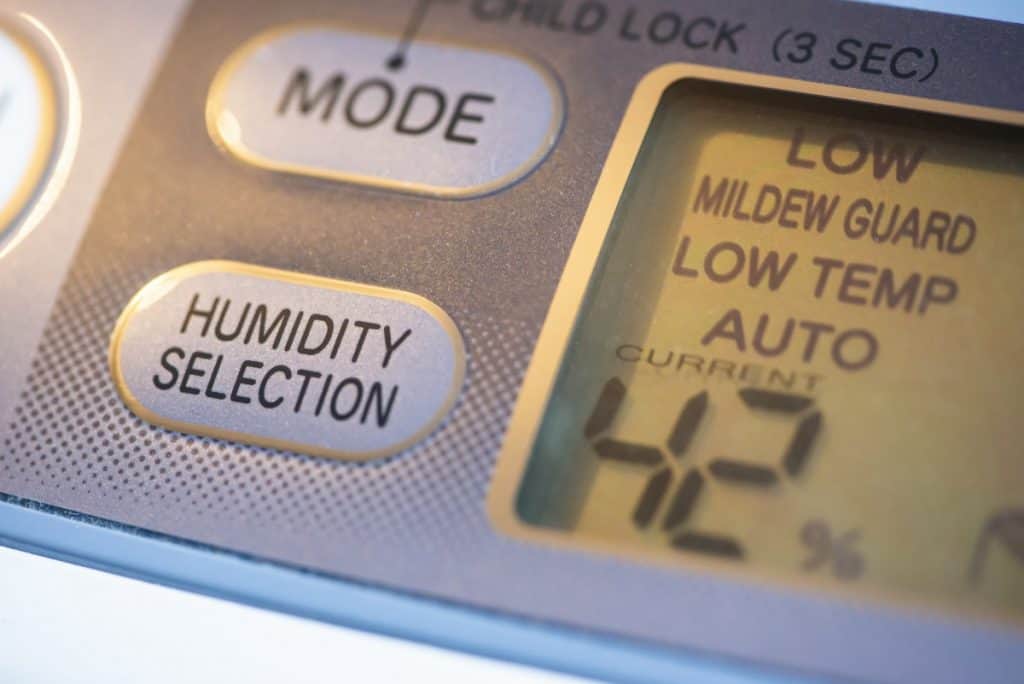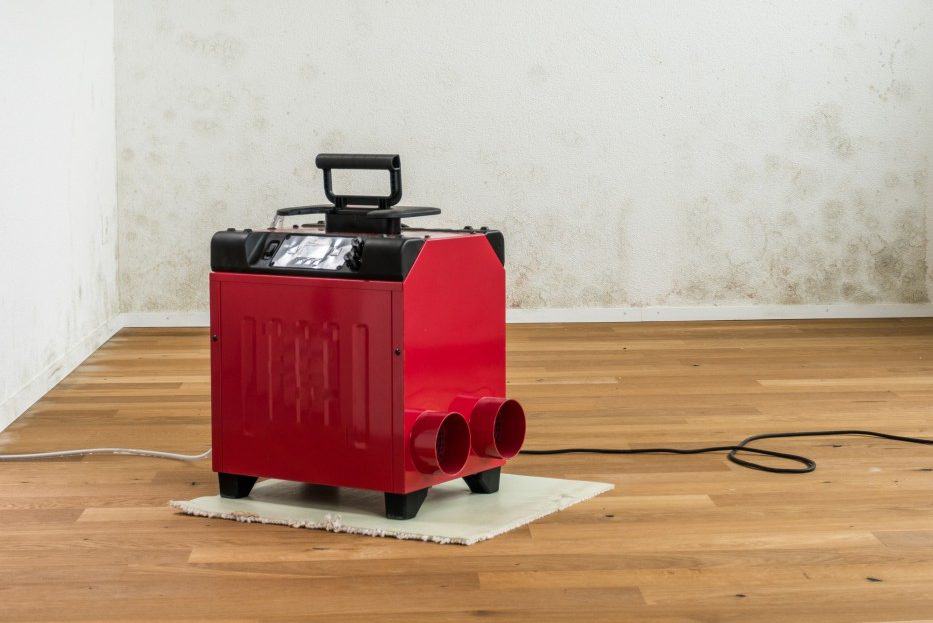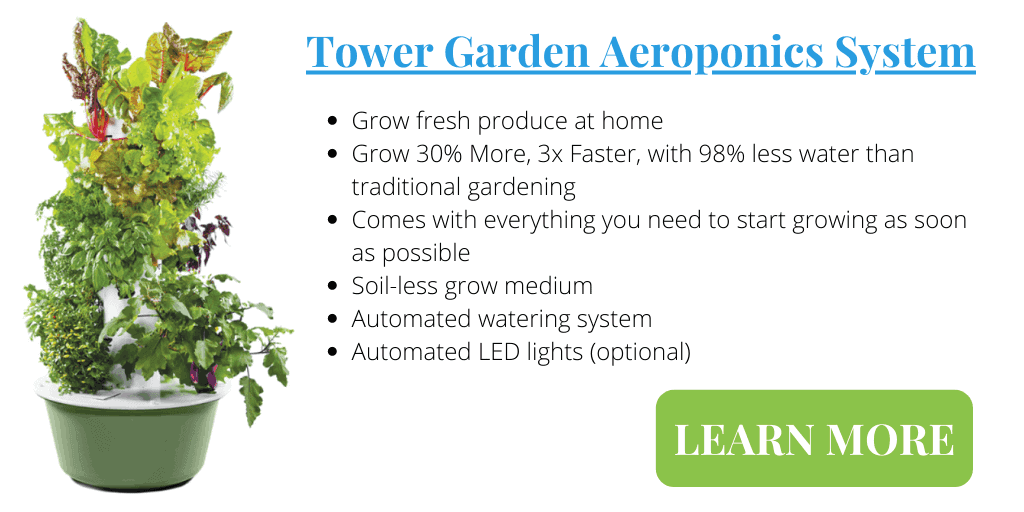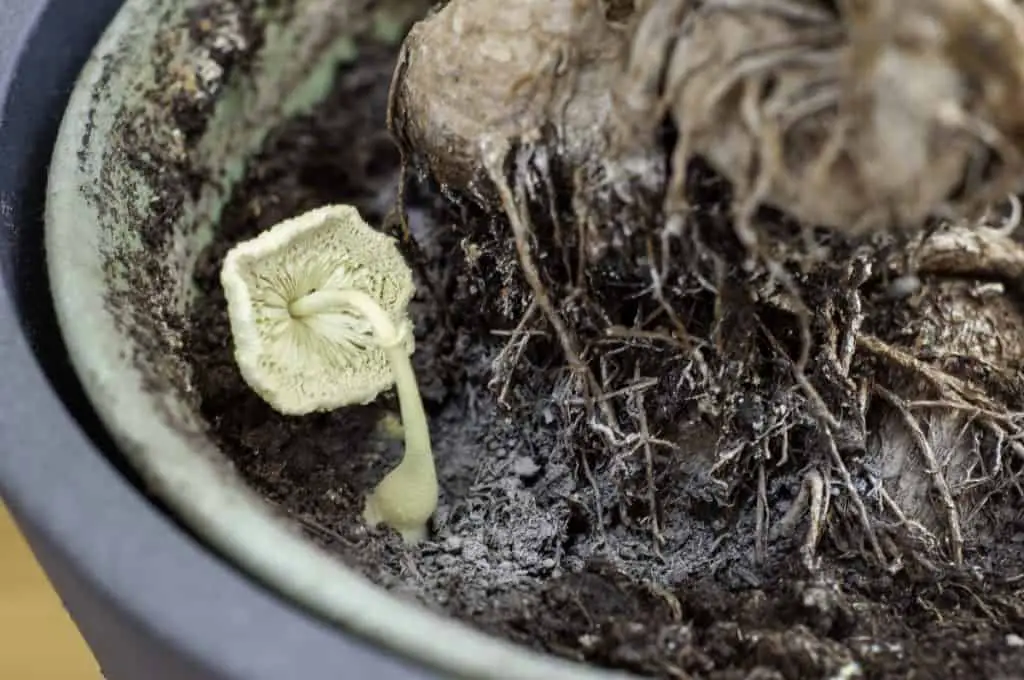Grow rooms need to be kept dry to optimize the health of your plants and their growth potential. While they do have a heavy impact on maintaining proper humidity levels, dehumidifiers alone are not enough to handle the job. That’s why we’re going to teach you how to take the guesswork out of where to place a dehumidifier.
In a small grow room, locate the dehumidifier to maximize airflow over the grow area. For larger grow rooms where multiple units are required, space the units out evenly to maximize coverage. For suspended units, locate them above or next to the grow lights for maximum effectiveness.
Where to place a dehumidifier in a grow room is one of the most important aspects of managing an indoor growing environment. Placing the dehumidifier in the wrong location in the room could minimize the effectiveness of the dehumidifier, requiring that you run the unit for longer periods of time. The wrong location of the dehumidifier could also affect the health of your plants.

Where To Locate A Dehumidifier In A Grow Room
Locating your dehumidifier in the wrong location in your grow room can reduce the effectiveness of the dehumidifier to the point of making it only marginally effective in reducing the moisture content in the room.
The location of the dehumidifier in your grow room will depend on a few factors that you need to consider for your grow room.
A large grow room may need more than one dehumidifier, in which case, you will need to balance the location of the units to maximize effectiveness throughout the room.
There are two main factors that you need to consider when locating your dehumidifier: the effective range of the unit and the airflow.
- Energy-efficient: This mini dehumidifier, with a compact design and 400 ml capacity per day...
- Modern Design: Its clean appearance makes it a perfect fit for whatever corner or small spaces...
- Easy to Use: Vivosun Mini Dehumidifier is ultra-simple to use and operate; Just plug it in,...
Effective Range Of The Dehumidifier
Most dehumidifiers will indicate on the specifications for the unit the amount of space that the dehumidifier will effectively cover. This specification will vary from unit to unit. If you have a space that only requires one dehumidifier, you may think that the best place for its location would be in the center of the room.
However, if your growing setup is arranged around the walls of the room, the center of the room may not be the best place to locate the unit.
With the unit place in the center of the room, the grow areas arranged around the walls will be on the extreme peripheral of the effective range of the dehumidifier.
A position that is offset from the center of the room, closest to your highest density of grow areas, would be the best location for the dehumidifier.

Maximize Airflow For The Dehumidifier
For a dehumidifier to be effective, it needs to have unimpeded airflow to maximize the air circulation in the room and effectively remove moisture from all parts of the room.
If the airflow is restricted, some areas of the room may not benefit from the effect of the dehumidifier. This could result in parts of the room becoming damp and humid while others become too dry.
For the purpose of maximizing airflow, the dehumidifier should not be located close to a wall, an air conditioner, a heater, or a fan. Placing a dehumidifier close to these locations will disrupt the airflow around the unit and decrease its efficiency.
The Best Location For A Dehumidifier
The best location for a dehumidifier is just above or next to the grow lights of your grow system. If you have low ceilings or it is not possible to hang your dehumidifier from the ceiling, then the next best location is on the floor, preferably directly under your grow tables.
Of course, if you place your dehumidifiers under the grow tables, you need to make sure that the airflow is not restricted by placing them too close to a wall or near any other items that you may store under the tables.
The space under the tables can become cluttered with boxes, containers, spares, and other equipment, so if you choose to locate the dehumidifier under the table, make certain the space is kept clean and uncluttered to promote airflow.
If you have a free-standing floor unit dehumidifier and you have a relatively small room, then this is the ideal circumstance because you can move the unit around in the room to more easily monitor and adjust its effectiveness.
Suspended units are a little more difficult to position, and once they are set up, they are more difficult to move and relocate. If you have a suspended unit, it is best to get the location right the first time to minimize the need to move the unit once it is installed. For suspended units, it is best to locate the unit above the grow light area of the room where you have the most intensive growth.
Ducted units are another option. This is where the dehumidifier is installed outside of the room, and ducts are taken into the room and positioned where they are needed. The length of the ducting cannot be too long, preferably less than 30-feet, to ensure the effectiveness of the dehumidifier.

Can You Put A Dehumidifier In A Grow Tent?
If you are using grow tents, then a dehumidifier located outside of the grow tent will offer limited benefit. This is because the airflow for the dehumidifier will not be able to access the inside of the grow tent, and you will experience moisture build-up inside the tent.
With some grow tents, you can place a dehumidifier unit outside the tent and pipe the air from the dehumidifier into the tent through vents.
There are specialized dehumidifier units that are manufactured for installation inside a grow tent. Various sized units are available, and they are sized and rated to specific sizes of grow tents and will effectively reduce humidity in that space volume.
Before you go ahead and purchase a dehumidifier for your grow tent, you need to know the dimensions of your grow tent and purchase an appropriately rated dehumidifying unit.
The location of the dehumidifier in the grow tent will be determined by the type of unit that you buy. The manufacturer will advise you on the recommended best location for the unit to ensure maximum efficiency and effectiveness.

Signs You Need A Dehumidifier In Your Grow Room
If you are new to growing plants in a grow room, you may wonder how you might know when you need a dehumidifier in your grow room?
Because a grow room is not open to the environment where natural airflow and temperatures can take care of excess humidity, you need to control the environment for your plants.
Depending on your climate, humidity level, and the size of your grow room, there are a variety of signs that may indicate that there is excessive moisture in the grow room that could adversely affect your plants and also your own safety.
The best optimal relative humidity, or RH, for both people and plants is between 40 and 55 percent. Below this level, and above this level, both plants and people begin to feel the effect of the air being too damp or too dry.
Plants give out moisture into the atmosphere as they transpire, and any open water systems such as hydroponics will also contribute to raising the humidity level.
Signs that you need a dehumidifier in your grow room include the following.
- Moisture droplets forming on your windows or on the inside surface of your grow tent.
- Mold forming on the walls of your grow room or grow tent.
- Mildew infestation on your plants.
- Stunted growth in your plants. High humidity limits nutrient uptake in plants and can also lead to wilting.
- Musty, damp odors in the grow room.
If you have observed any of these indicators or problems starting to develop in your grow room or in your plants, then you may need to consider investing in a dehumidifier for your grow room.
Conclusion
Growing plants indoors is a rewarding activity, and it can extend the natural growing season of plants because of the artificially controlled environment.
Humidity is one of the environmental factors in a grow room that needs to be monitored and controlled to maintain a healthy growing environment for your plants.
Knowing where to place the humidifier will help to maximize its effectiveness in the room and make sure there are no spots of high humidity in the room that could become problem areas.
Digital monitoring gauges that measure temperature and relative humidity in your grow room are also a useful tool to properly and accurately monitor the humidity levels to optimize your success in your grow room!


